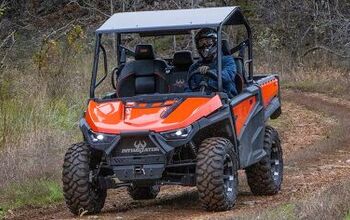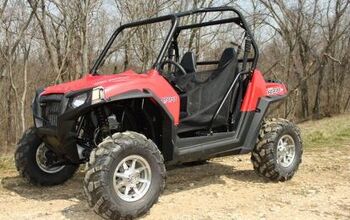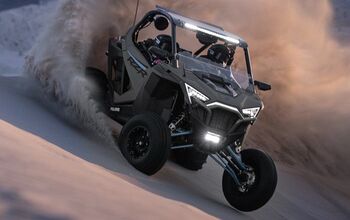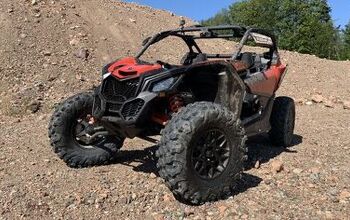How to Make Your CVT Belt Last Longer
We will wager a hefty sum of money that every single reader of this website knows the agony of throwing a belt on your ATV or side-by-side. Absent that circular strip of Aramid and composite fibers, you’re left with a fistful of no-go and the unenviable prospect of either walking home or asking a buddy to a tow.
We would rather walk, for the record. Our pride knows no bounds.
That is why it’s critically important to show a dose of mechanical sympathy to your machine’s CVT belt. Yes, it is very tempting to deploy all 200 horsepower in your new Can-Am Maverick X3 X MR Turbo RR immediately and constantly – but doing so can be a one-way ticket to Breakdown City. This goes double for any machine that’s been modified to dispense levels of power for which its designers never intended.
Belt failure is not limited to the outrageously horsepowered or jankily modified. Just about any machine packing an engine greater than 800cc could stand to take a preventative step or three when it comes to getting the most out of a CVT belt. Like water, power will take the path of least resistance – and break the weakest link in order to get there. If that’s the CVT belt, then so be it.
As you’d expect, the experts at Gates Belts have a few thoughts on this subject. They’ve been in the industry for decades and have seen just about every type of belt failure imaginable. The development team has caused a few spectacular failures as well – all in the name of science, of course. The result of all this hard work are the outstanding Gates G-Force Redline CVT belts. But even the best belts need some TLC.
If you have been the victim of a belt failure, Gates put together a handy guide to help show you why. We will go into some of the key avoidable causes below.
Proper clutching, the Gates crew has learned, makes all the difference in the world and plays a huge role in helping a CVT belt last longer. Improper clutching is a sure-fire way to ruin a belt since there’s an excellent chance additional (and unnecessary) strain is being put on the CVT belt if clutching is not properly matched to conditions. For example, reclutch if you’ve decided to go up a tire size or have added a notable amount of weight to your rig by way of heavy cages and stereos).
Proper gearing is also essential, even if – by definition – a CVT doesn’t technically have any gears at all. Generally, there are two clutches in a typical side-by-side transmission, with the primary (drive) clutch bolted directly to the crankshaft and the secondary clutch bolted to the transmission input. Your Gates belt is the link between the two. When a driver pokes the accelerator pedal, weights cause the primary clutch to react against a spring and permit the belt to ‘ride up’ or down the clutch sheave. This changes the ratio and permits the right level of acceleration relative to how much the accelerator pedal was pressed.
What does all that annoying science have to go with the preservation of a Gates G-Force Redline belt? If you’ve added bigger tires to your machine or adjusted its weight, the original reaction properties of those weights on the primary clutch will have changed, potentially putting unnecessary strain on the CVT belt. Think of it this way: a human must move their leg with more force when wearing a pair of steel-toed boots than when donning a set of sneakers. The same principles apply here. If you’re not sure, seek assistance from the pros. Clutch kits are widely available to properly calibrate your rig’s clutches to match the other upgrades or your riding style.
There’s something to be said for upholding a decent level of overall system maintenance to help get the maximum life out of your Gates belt. Sure, we all know not to turn a belt inside out while installing it or zip-tie the thing flat to a ROPS bar lest damage be caused to the belt before it’s even installed. But the other components of the CVT system – particularly those clutches we spent a couple of paragraphs talking about – can shorten a belt’s life if they are not kept in top shape.
Since heat is a major enemy of a healthy CVT belt, be sure to watch out for gouges in the clutch sheaves or the intrusion of large amounts of trail debris. Any or all of these can cause slip, which causes heat, which causes … you get the idea. Clutches, like so many other components of our off-road toys, are a wear item. Pay attention to new or strange noises and odd power delivery behavior. Either could be a sign of impending problems.
When it comes to belts, Gates says it best: don’t break it – break it in. This is one case in which an ounce of prevention (proper installation, correct gearing, and best practice maintenance) is worth far more than a pound of cure.
Visit Gates.com for more information.
More by Sponsored Post



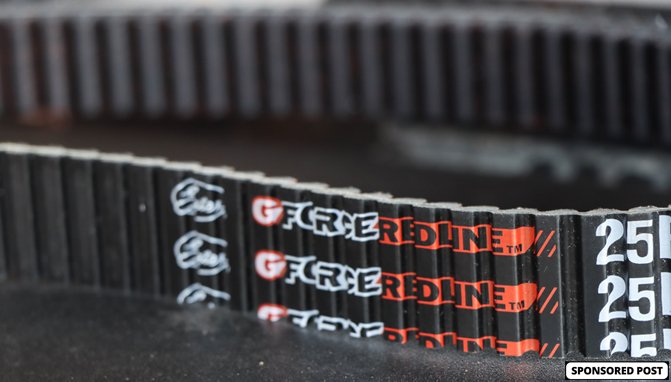








![Derek Guetter Crashes During Backflip [video]](https://cdn-fastly.atv.com/media/2022/10/24/8744073/derek-guetter-crashes-during-backflip-video.jpg?size=350x220)


![Pedal Powered Side-by-Side [video]](https://cdn-fastly.atv.com/media/2022/10/24/8744132/pedal-powered-side-by-side-video.jpg?size=350x220)



